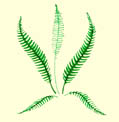The Fernhurst Society
Newsletter no 45, May 2015
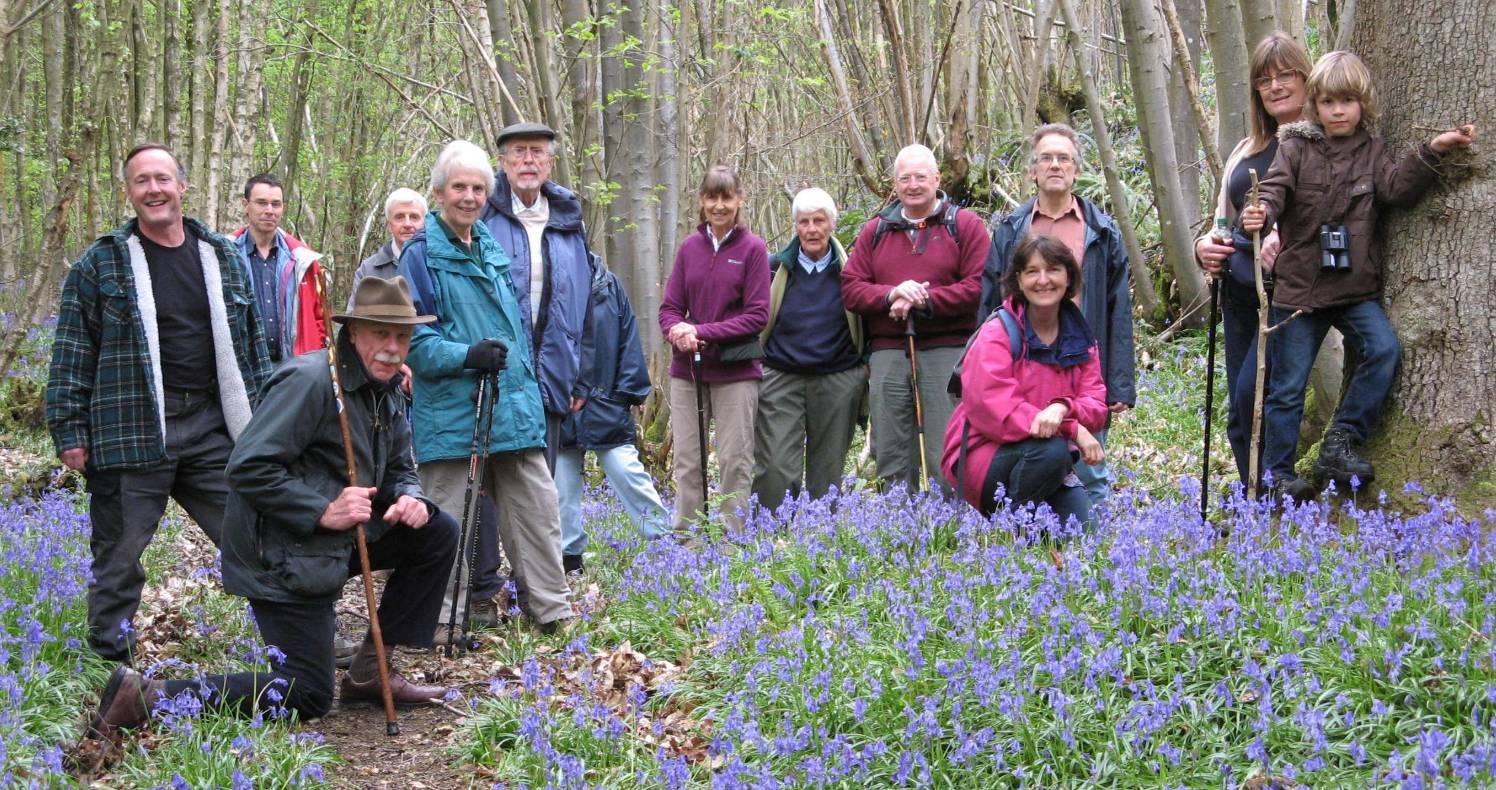
Bluebell walk to Shulbrede and back – led by Bob Smalley – see page 4. Photo: Brenda Newman
2015 Summer and Autumn Programme
| Sun 17 May Recreation Ground From 12.30pm | FERNHURST REVELS Visit our stall and preview the Fernhurst Archive Team’s 1940s exhibition and some recent acquisitions (see Snippets from the Fernhurst Archive). |
| Sun 28 June Meet at Crossfield Car Park at 1.30pm for car-sharing. We will spend around 2 – 2 ˝ hrs in Petersfield. | Petersfield Heath and its Archaeology – walk
The Heath has one of the finest and greatest ranges of Bronze Age barrows in the SE of England – more than 21 - all shapes and sizes between 3,500 and 4,200 years old. Our guide, Peter Price, will walk us round the Heath, showing us a variety of barrows / burial mounds, and give us an insight into the lives of our prehistoric ancestors. |
| Sun 20 Sept Meet at Crossfield Car Park at 1.30pm for car-sharing | A meander around Petworth with Peter Jerrome – walk Peter Jerrome is the knowledgeable Chairman of the Petworth Society and has written a number of books on Petworth. The walk itself should take no more than 2 hours. |
| Thu 29 Oct Village Hall 7.15pm | Fernhurst in the 1940s - exhibition and talks A look at how Fernhurst coped in this turbulent decade from the dark days of war to peacetime and rebuilding. |
| Thu 26 Nov Village Hall 7.30pm for 8pm | AGM and talk on ‘The World’s Best Dockyard in the age of sail’
AGM followed by talk on Chatham’s historic dockyard given by Admiral Sir Ian Garnett. |
25 May: reunion of local WW2 children and evacuees
If you were a WW2 child living in the Midhurst Rural District Council area (Pulborough to Petersfield and Fernhurst to Singleton) you are very welcome to join the reunion taking place in Midhurst on Monday 25 May.
Peter Sydenham, who is organising the event from Australia, used our 'Voices of Fernhurst' book and the assistance of the Fernhurst Archive team to identify and track down people in this area who may wish to join the event.
Events that day include a gathering in the morning to remember the Midhurst and Petworth children who died in WW2 and a celebratory get- together in the afternoon at Midhurst Grange.
Check for final details of events in the Listings Section of the Thursday 21 May edition of the Midhurst & Petworth Observer.
If you wish to contact Peter beforehand, his email address is sydenham@senet.com.au or by post to Peter Sydenham, c/o 66 Poplar Way, Midhurst, GU29 9TA.
Snippets from the Fernhurst Archive
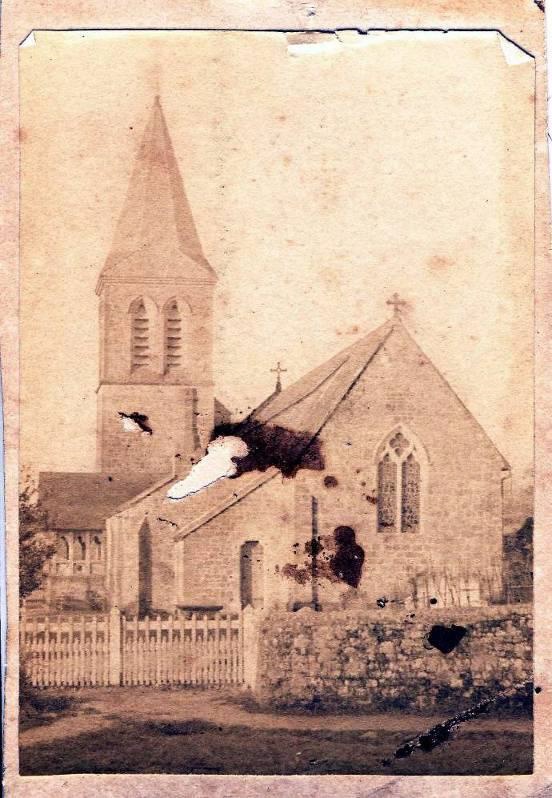 Work has started on the small exhibition for the
October meeting of the Fernhurst Society on
Fernhurst in the 40s. A taster will be on display
at the Society’s Revels stand on May 17th
together with other acquisitions including a set
of three wartime special issues of the Fernhurst
Parish Magazine for Dec 1915, April 1916 and Dec
1916 which featured letters from Fernhurst men
serving on many fronts, such as France, Gallipoli
and Belgium. Their stories are shocking,
saddening, uplifting and sometimes hilarious.
Work has started on the small exhibition for the
October meeting of the Fernhurst Society on
Fernhurst in the 40s. A taster will be on display
at the Society’s Revels stand on May 17th
together with other acquisitions including a set
of three wartime special issues of the Fernhurst
Parish Magazine for Dec 1915, April 1916 and Dec
1916 which featured letters from Fernhurst men
serving on many fronts, such as France, Gallipoli
and Belgium. Their stories are shocking,
saddening, uplifting and sometimes hilarious.
The Daily Express contacted us as they wished to get in touch with Ken Young re a feature they were planning on the Home Guard and he was very happy to talk to them.
Two Fernhurst Society members are researching the history and development of Fernhurst Club. Once researched, findings could well form one of our new series ‘Tales from the Archive’, which appear to be going down well.
A photo of a hitherto unknown view of the green in the 1880s and one of the church (left) was emailed to us by a member of the Puttick family.
Christine Maynard, Fernhurst Archive
Do you want to find out more about the history of your home?
The Fernhurst Archive holds a wealth of information on the history of homes in our village/parish and we have the knowledge to point you in the right direction for further research.
The Archive is open Tuesdays from 2.30pm – 5pm. The entrance is at the side of the village hall. To arrange a visit to discover what the Archive holds relevant to your home, please contact Christine Maynard via the Society's email.
Complete census data for 1841 – 1901 (and 1815 parish list) is available for free on our website www.fernhurstsociety.org.uk/genealogy/cen_intro.html
We hope you will share your own findings with us.
The Archive team welcomes copies of any existing research, documents and photos to add to our rich picture of life in Fernhurst.
Reviews of recent Fernhurst Society events
27 November 2014
Peter Jerrome’s Petworth
Peter entertained us with a history of Petworth drawn from original historical documents and delivered with a dry sense of humour. He touched upon key events such as the illegal enclosure of common grazing land by the Earl of Northumberland to make a deer park for Petworth House in the 16th century. The distress caused to the tenants resulted in a long-running legal case against the Earl. The tenants raised money, the "common purse", to fund legal action in the Chancery court. A large bribe, a "clokebagge well fraught with money" was offered to the tenants' leader to drop the case. Peter has written at length about this in one of his books ‘Cloakbag and the Common Purse’. We’re very much looking forward to the walk he’s leading for us on September 20th.
26 February 2015
Billet hooks and Bavins
Jon Roberts of the Weald and Downland Museum gave an informative talk on the history of woodland management that drew a large audience.
Illustrating his talk with amusing images from manuscripts, paintings and photographs, Jon explained that the management of woodland [whether it was coppiced, pollarded or neglected] has depended on the value of its ‘produce’.
In the Domesday book a woodland’s value was determined by the number of pigs it could sustain. By the Middle Ages there was a growing requirement for large timbers for ship and house- building. At the same time woodland was our primary source of fuel for cooking and heating. Both needs were met by dividing the produce into ‘timber’ and ‘wood’. Timber exceeded 8 inches/20cm in diameter and wood was everything of a smaller diameter.
Landowners retained ownership of the valuable timber and granted rights to tenants to collect a certain amount of wood for their needs. Generally, the more rent you paid the more wood you were allowed to collect.
Pollarding was popular as it enabled the trunk to grow for use as timber and the tenants were allowed to climb trees with billet hooks to collect the slimmer branches and twigs (for fuel) which would be replaced by new growth.
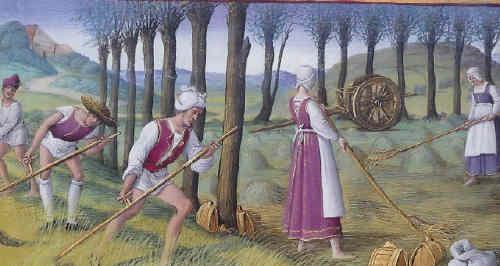
Hours of Henry VIII, June: Mowing [detail, H8]. 1495-1505.
More wood was required than timber so the pollarded tree stood for many years. Jon had a great image from a mediaeval manuscript of a peasant having climbed a tree cutting the wood with a billet hook and a monk down below him chopping the timber of the tree with an axe.
Other methods of management included shredding - lopping off the side branches (wood) which led to the tree growing tall and straight with a small ‘lollipop’ canopy (those mediaeval paintings were telling the truth).
Coppicing – prevalent in our area - cuts the hazel, chestnut or willow back to a stump. The tree thinks it’s a youth again and sends out new shoots which grow into long slender poles for fencing, making charcoal, baskets and walking sticks.
Asked at question time how long a coppice would live, Jon answered ‘Forever if well managed and free from disease’.
Elaine Ireland
P.S. Bavins, pimps and faggots were standard sizes for bundles of wood – defining dimension, length and quantity of the wood and how it should be tied. Bavins are brushwood tied with one band. The terms are southern English derived from French.
26 April 2015
Bluebell walk
- “Must have been something I said”
In the car park we were just like the whethermen…whether it would rain or whether it wouldn’t...it didn’t.
Our crocodile of 13 hardy hikers set off from the car park promptly at 1.30pm and we were soon climbing up the hill at Vann Common. Samuel, our token younger generation member, was later to observe that our numbers grew as we strolled along - well done that man; we reached 17 by the top of the hill.

The host of bluebells on the south facing slopes rewarded our hard work. We walked for at least 45 minutes through a sea of blue; up and down taking in the picturesque spring vista.
Onwards to Shulbrede. About half way and more flowers as we descended the hill.
Walking towards the candle factory we spied a large bird some distance away in the middle of a field. Again we were again indebted to Samuel - out came the binoculars. Well done that man! We could now see ‘twas a buzzard having its dinner; of what we do not know.
The walk back past Greenhill House and Highbuilding was a pleasant Sunday afternoon stroll.
It was at this point I began to worry about my conversations with fellow hikers ‘Was it something I said?’…they began to disappear...two or three here…one or two there. By the time we reached the car park there was only Penny and I left… must have been something I said.
A great afternoon for everyone. Not far off the beaten track and nature rewarded us so generously for such little effort.
Bob Smalley
For your September diary
A great day out for family and friends
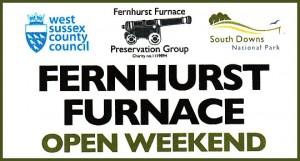 This year the open weekend is taking place on 12-
13 September from 10.30am – 5pm each day.
Entry is free but donations would be gratefully
appreciated towards preservation of the site.
This year the open weekend is taking place on 12-
13 September from 10.30am – 5pm each day.
Entry is free but donations would be gratefully
appreciated towards preservation of the site.
If you’re new to our area, this is a major event in the calendar, highlighting the history of iron production in this area in the 16th, 17th and 18th centuries (look out for hammer ponds on local maps). Known for producing cannon, Fernhurst Furnace is one of the best preserved in the whole of the Weald.
There really is something for everyone at this event. Current plans include: .
- Tours of the furnace site
- Musket, cannon and longbow demonstrations by the Sealed Knot
- Guided walk from Fernhurst Furnace to Shulbrede Priory exploring the archeology and natural history
- Owl and hawk flying by the Hawk Conservancy Trust
- Demonstrations by the Gosport Living History Society of Little Woodham http://www.littlewoodham.org.uk/
- Demonstrations and displays by Sparsholt College
- Demonstrations of pole lathing, charcoal burning, spinning, blacksmithing, walking stick making
- ‘Local’ Lamb Roast and a Vegetarian Option
- Coffee, tea, cakes, soft drinks and local beer
- Target archery
- Chair making
- Flint knapping
- Glass Blowing – Jake Mee from the Smithbrook Glass Blowing Studio will be demonstrating and talking about the history of glass making
- Timber hewing demonstrated by the Weald and Downland Museum
- Early metals technology demonstrated by Butser Ancient Farm
- Den building, treasure hunt and games for children
- Future plans for the Furnace site
- Books and souvenirs for sale.
Visit the Fernhurst Furnace website to find out more: http://www.fernhurstfurnace.co.uk
